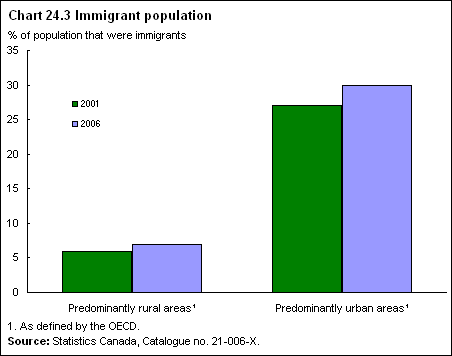Small communities look to immigrants
Archived Content
Information identified as archived is provided for reference, research or recordkeeping purposes. It is not subject to the Government of Canada Web Standards and has not been altered or updated since it was archived. Please "contact us" to request a format other than those available.
Related information
Many small communities are looking to immigration to help stimulate their economies. Many already have a strong immigrant presence because of job opportunities. Even so, most immigrants choose to live in larger cities, especially Toronto, Vancouver and Montréal, rather than moving to smaller centres or less populated areas.
In 2006, almost 312,600 immigrants (regardless of when they arrived in Canada) resided outside the commuting zone of cities. These immigrants represented slightly more than 5% of the population in these areas. In smaller cities, the immigrant share of the population was slightly higher, at almost 8%. By contrast, within larger cities, immigrants represented about 25% of the population.
British Columbia and Ontario have a higher share of immigrants living in outlying areas. An active economy in Alberta and an active immigration program in Manitoba have contributed to higher shares of immigrants moving to less populated areas of these provinces. However, Quebec has a relatively small share of immigrants in its less populated regions.
- Date modified:

